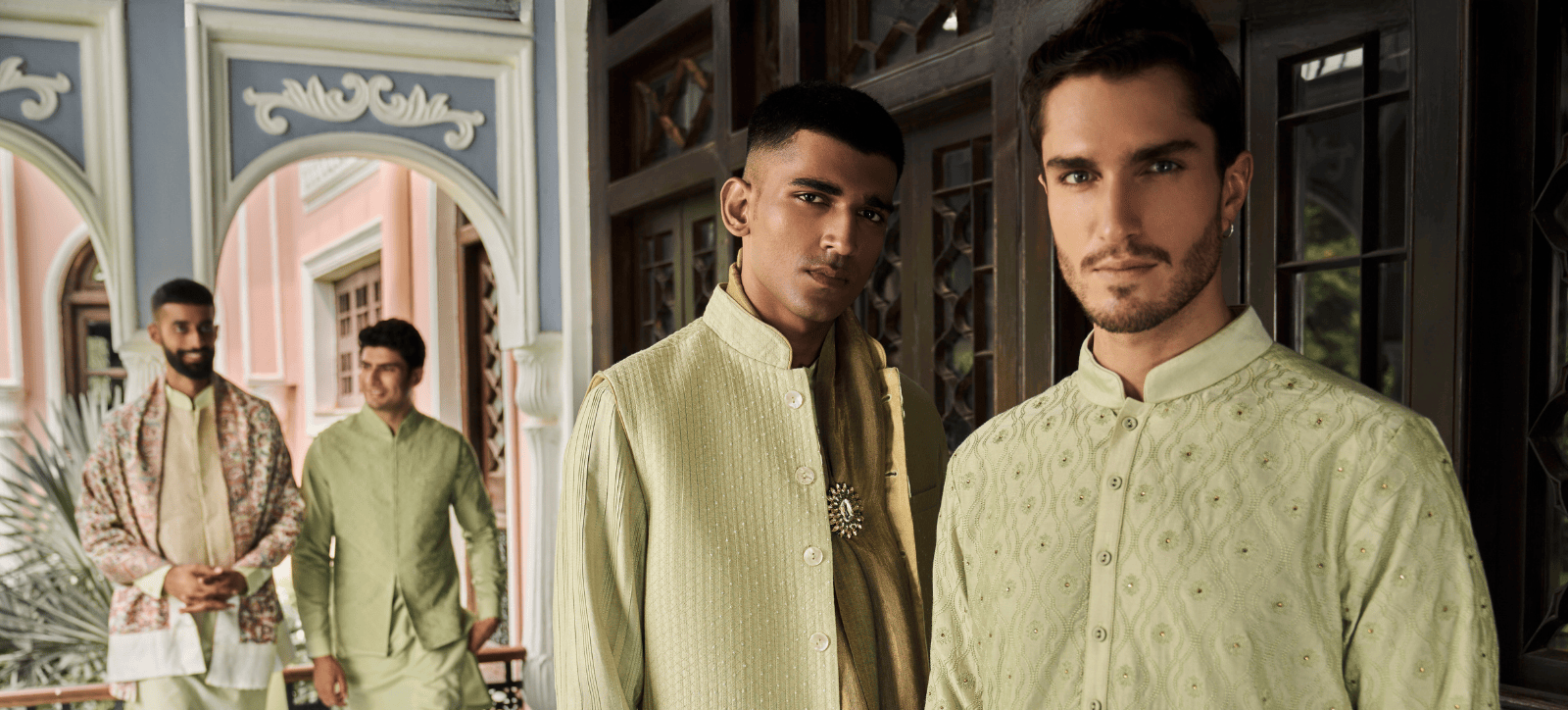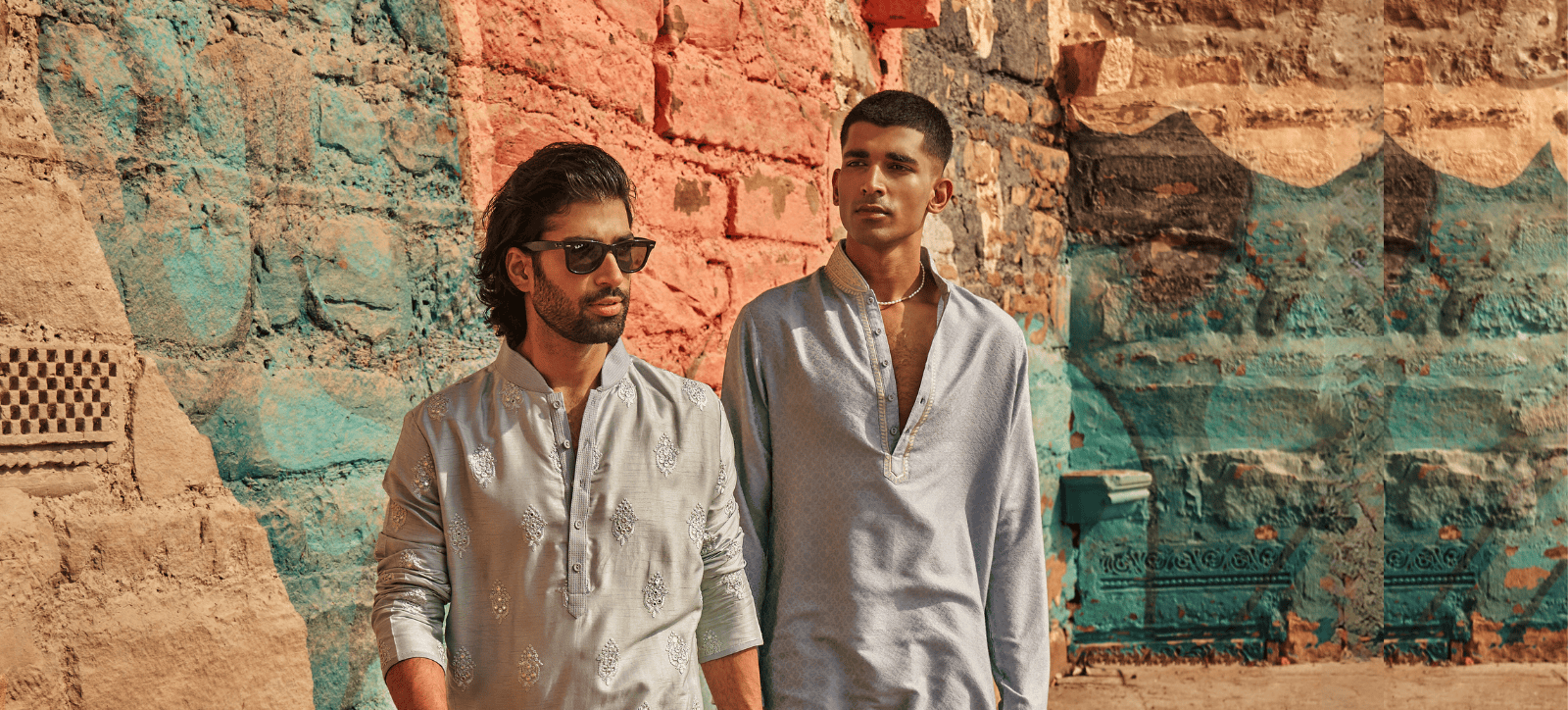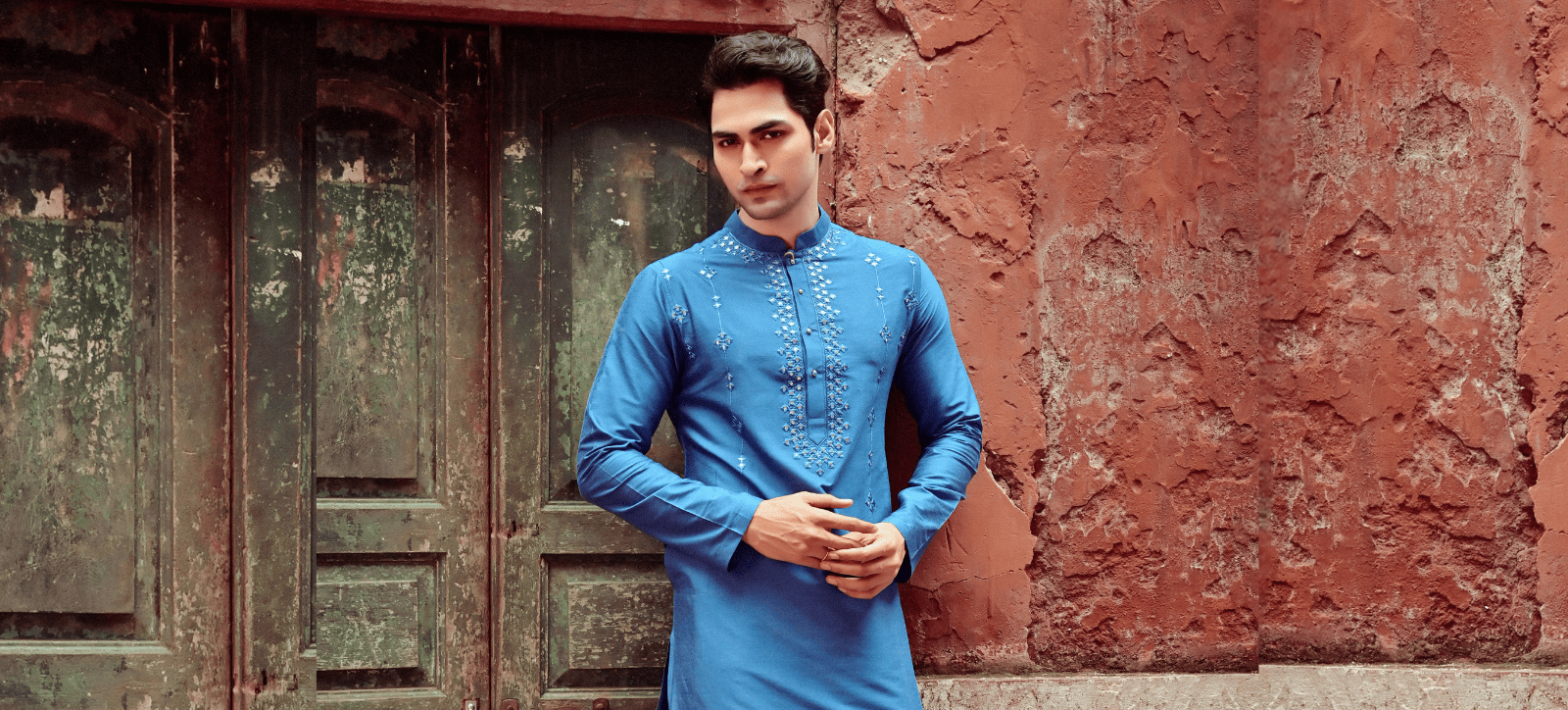
The Cultural Importance of Ethnic Wear During Indian Festivals
Read about the cultural significance of men's ethnic wear during Indian festivals by delving into the spiritual, regional & modern aspects of traditional attire.
India is a land of vibrant festivals, each celebrating a unique aspect of the country’s cultural, spiritual and social life. While food, music and rituals play a significant role in these celebrations, clothing is equally important in expressing the festivity and cultural richness of the occasion. Men's ethnic wear holds a special place during these celebrations, offering more than just aesthetic appeal—it connects individuals to their heritage, serves as a symbol of cultural identity and fosters a sense of unity.
This blog explores the significance of men's ethnic wear during Indian festivals and how it continues to play a vital role in upholding tradition and heritage.
Reconnecting with Tradition through Ethnic Wear
Men's ethnic wear, like the kurta-pajama, sherwani and dhoti, is deeply rooted in India’s cultural and historical fabric. Wearing these traditional garments during festivals not only elevates the spirit of the occasion but also connects the wearer to centuries-old customs.
- Heritage and Craftsmanship: Men’s ethnic wear is often crafted using traditional techniques that reflect regional artistry. Whether it's the intricate zardozi embroidery on a sherwani or the handwoven silk of a kurta, these garments showcase the skills of artisans who have inherited these crafts from their ancestors. By donning ethnic wear during festivals, men not only celebrate the occasion but also honour and promote India’s rich textile heritage.
- Spiritual Significance: The colours and fabrics of men's ethnic wear are often chosen for their spiritual meanings. During Diwali, men typically wear bright kurtas in shades like red, yellow and gold, which are considered auspicious and symbolize prosperity. On Eid, crisp white or pastel-coloured kurtas are favoured as they represent purity and peace. These choices are deliberate, adding deeper meaning to the festive celebrations.
Regional Variations in Men’s Ethnic Wear
India’s diverse cultural landscape is reflected in the regional variations of men's ethnic attire. Festivals provide the perfect stage to showcase this diversity.
- The Versatile Kurta-Pajama: The kurta-pajama is one of the most popular choices for men during festivals like Diwali, Holi and Durga Puja. This versatile outfit can range from simple cotton kurtas for comfort to silk and brocade versions adorned with embroidery for more formal occasions. In South India, the kurta is often paired with the veshti (dhoti), while in North India, churidars are a common pairing, highlighting regional differences in traditional wear.
- Sherwani: The sherwani, a long, coat-like garment, is often worn during grand celebrations like Eid and Diwali. Richly decorated with embroidery or intricate designs, sherwanis are commonly associated with weddings but are equally popular during festivals. The fabric and design of the sherwani vary by region—some incorporate heavier fabrics like velvet and brocade in northern India, while others use lighter materials like silk, reflecting local climates and traditions.
- Dhoti and Veshti: In southern states like Tamil Nadu and Kerala, the veshti or dhoti is a popular festival garment. Made from cotton or silk, with simple gold borders for added elegance, the veshti is worn during festivals like Pongal, Vishu and Onam. In West Bengal, the dhuti (Bengali dhoti) is paired with a kurta during Durga Puja celebrations. Wearing a dhoti or veshti during festivals signifies respect for tradition and is a way of embracing cultural heritage.
Ethnic Wear as a Symbol of Identity and Expression
Men’s ethnic wear during festivals is more than a fashion statement—it is a way to express cultural identity, celebrate individuality and embrace modernity while staying rooted in tradition. 
- Cultural Identity: Ethnic wear reflects a man’s cultural and regional identity, especially during festivals. For example, during Navratri, Gujarati men wear colourful kediyus (a type of short kurta) paired with dhotis to perform garba and dandiya. In Punjab, men wear vibrant kurtas paired with chadra during Baisakhi. These traditional garments symbolize cultural pride and offer a way to celebrate one’s roots.
- Modern Adaptations: While traditional ethnic wear remains popular, men are increasingly embracing modern twists on classic styles. For instance, pairing a kurta with jeans or layering a Nehru jacket over a kurta offers a contemporary look without losing the essence of ethnic fashion. These adaptations allow for greater self-expression, letting men honour tradition while incorporating modern influences.
Explore Tasva for your next festive attire
In a world where modern fashion often dominates, wearing ethnic wear during festivals serves as a reminder of India’s timeless traditions, ensuring that the cultural significance of these garments remains relevant in contemporary times.
Shop your next festive attire from Tasva to put together a memorable look for the years to come.











